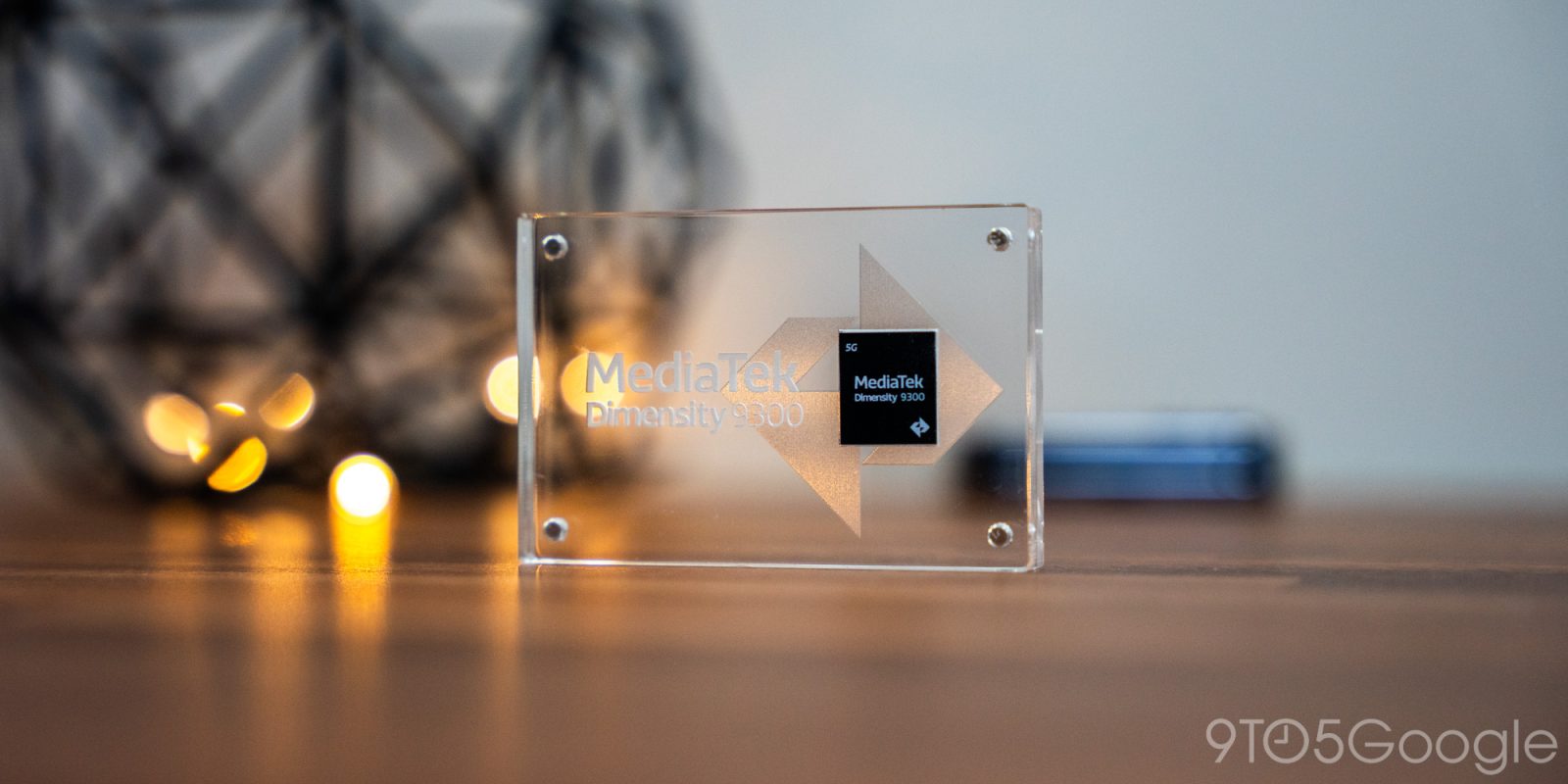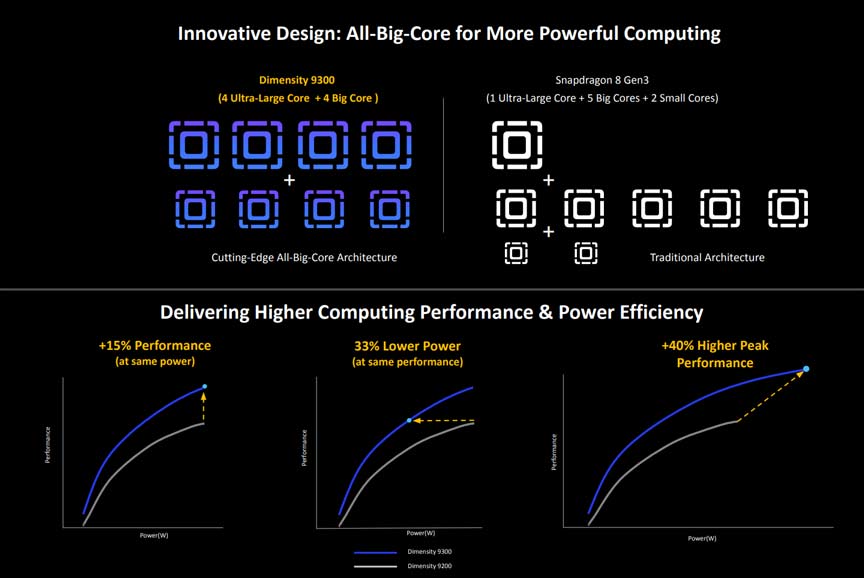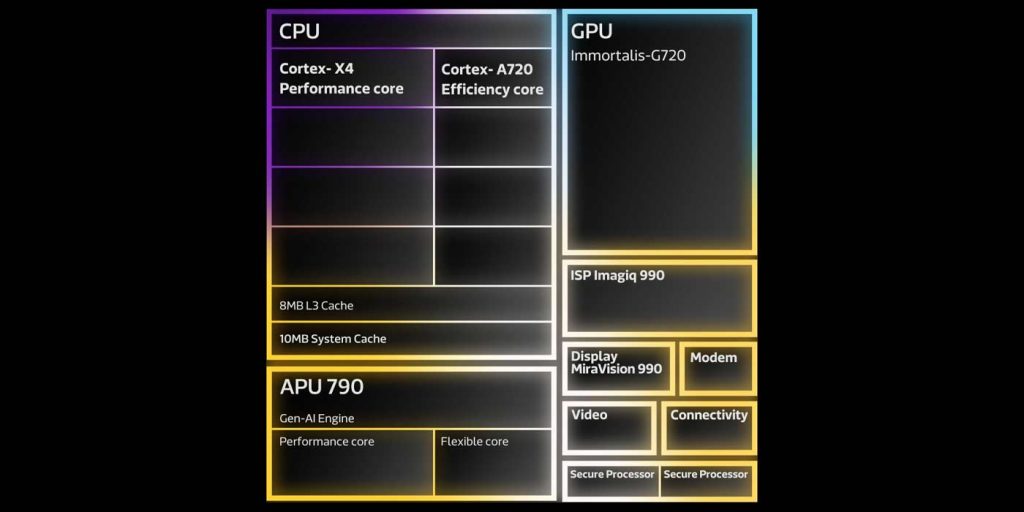
Just weeks after Qualcomm announced its flagship SoC for the upcoming year, MediaTek’s Dimensity 9300 steps into the light. The new chipset is packed with four Cortex X4 processors that should provide some serious mobile power.
The Dimensity 9300 is the third generation of MediaTek’s modern SoC lineup built on TSMC’s third-gen 4 nm process. Where past generations were powered with a combination of large and lower-powered cores, the Dimesnity 9300 takes a massive step toward overall CPU capability.
As the base architecture, the 9300 is built on four Cortex X4 CPU cores with four accompanying Cortex A720 cores. The former and largest X4 core runs at a peak of 3.25GHz, while the A720s come in at 2.0GHz at full power.
This approach allows MediaTek to focus on overall ability, with a 15% peak performance increase at the same power level – compared to the 9200. The Dimensity 9300 also delivers the same performance level as the 9200 at a 33% lower power rating. Across multiple cores, the 9300 comes in at a 40% higher peak performance.
The most surprising aspect of MediaTek’s new SoC is how it compares to Qualcomm’s newest flagship chipset in build alone. The Snapdragon 8 Gen 3 holds a single Cortex X4, five A720 cores, and two Adreno A520 units. Qualcomm’s chip is set to be the most powerful SoC yet, but its architecture is undoubtedly very different from what MediaTek has gone for. Whether that bodes negatively for Qualcomm remains to be seen until both chips are running on various devices across the Android market.

The Dimensity 9300 also packs an Immortalis-G720 12-core GPU structure with LPDDR5T support for the fastest RAM currently available for mobile devices. According to MediaTek, the 9300 is able to implement a much better scalable computing solution that pushes for higher performance. Overall, power consumption is able to remain steady even with more demanding apps on devices.
AI also plays a big role in the rather beefy build, with a re-engineered APU for current and future models that play a big role in generative AI. The APU 720 AI processor doubles the integer math performance while reducing power consumption by 45%. In actual usage terms, that translates to processes like image generation with Stable Diffusion in less than one second, which is faster than we humans can input prompts. At peak performance, the AI processor can run up to 33 billion parameter models. Of course, that’s based on scaling and requires more RAM at 16 and 24GBs.
As an SoC, the Dimensity 9300 will hopefully find itself in a few devices over the coming year or so, including foldables. With its new core architecture, the chipset is inherently engineered for foldables since the demands are higher and require a mix of both low and high-power scenarios, both needing acceptable performance.
The new chip also has support for Wi-Fi 7 up to 6.5 Gbps and MediaTek’s 5G UltraSave 3.0+, which comes in at 10% more efficient.

Comparatively, the Dimensity 9300 should beat the Snapdragon 8 Gen 3 in performance, given that it quadruples the number of larger cores. In GeekBench ratings, the Dimensity 9300 beat out the 8 Gen 3 by over half, which bodes well for the third-generation chip. If MediaTek is able to obtain the same efficiency statistics in real-life usage, the Dimensity 9330 will, without a doubt, be a true competitor in the mobile market.
MediaTek noted in its press briefing that the first devices with the Dimensity 9300 would be announced sometime in the coming days. Those devices are likely to be limited to China, though it’s a strong start for what could potentially be a compelling chipset for manufacturers to use in their devices.
FTC: We use income earning auto affiliate links. More.





Comments